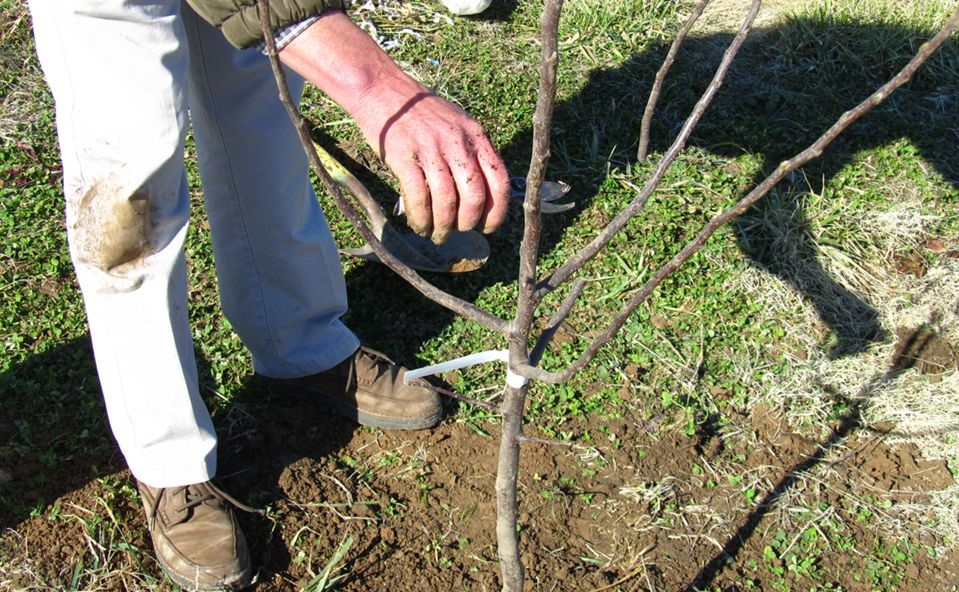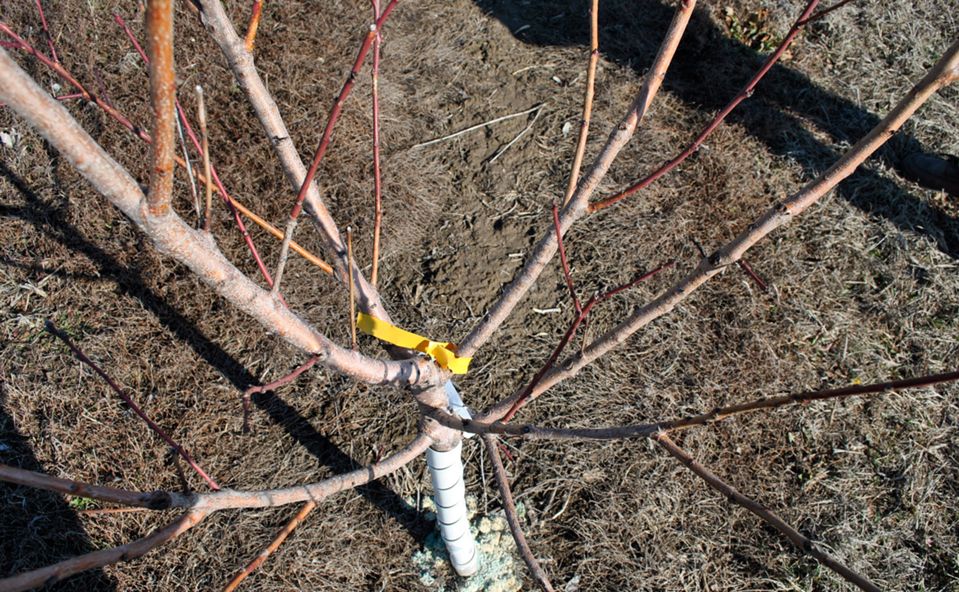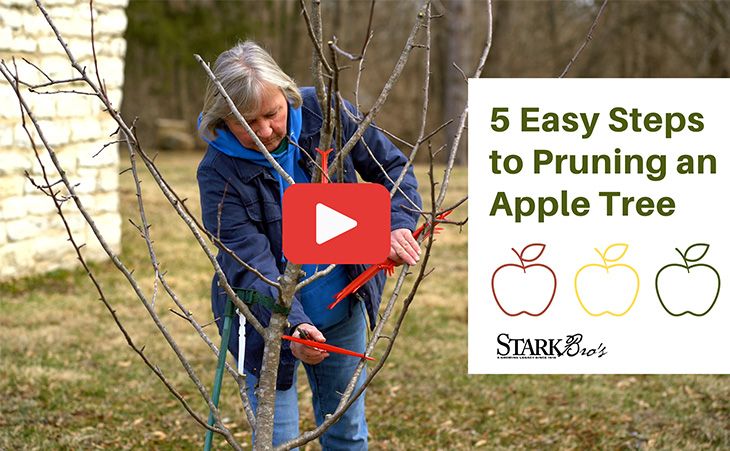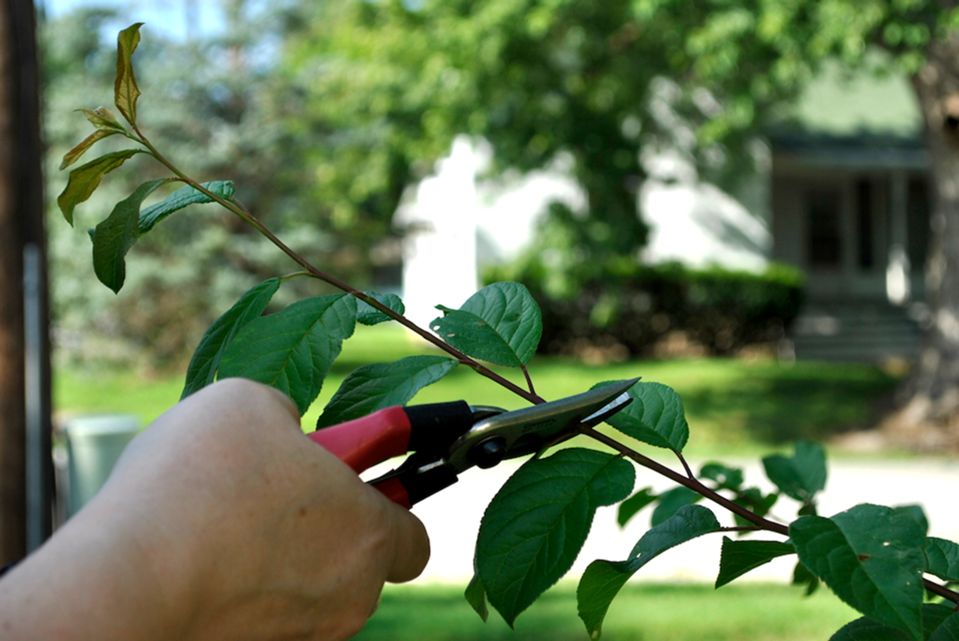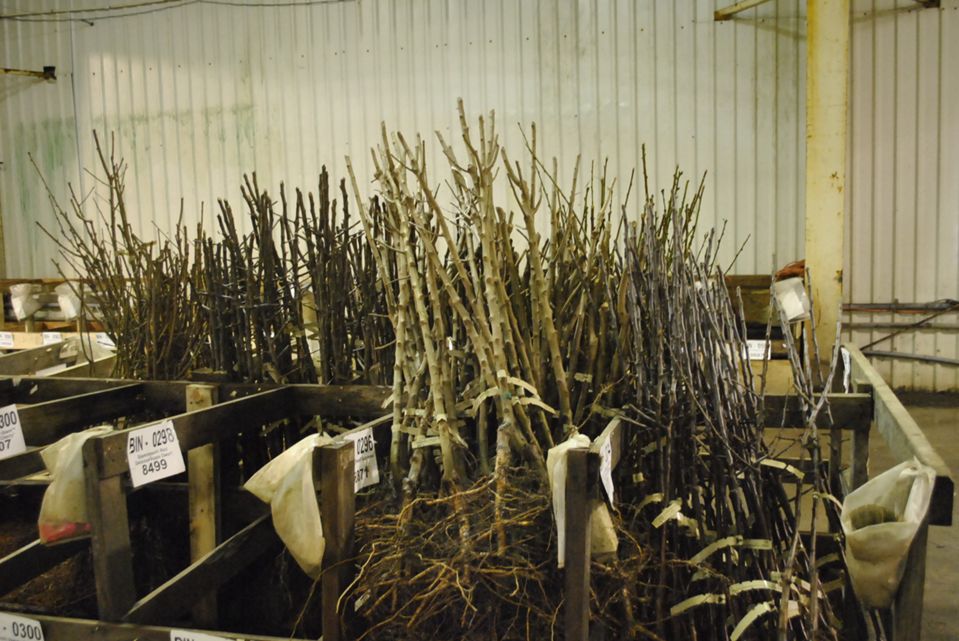Successful Fruit Tree Pruning
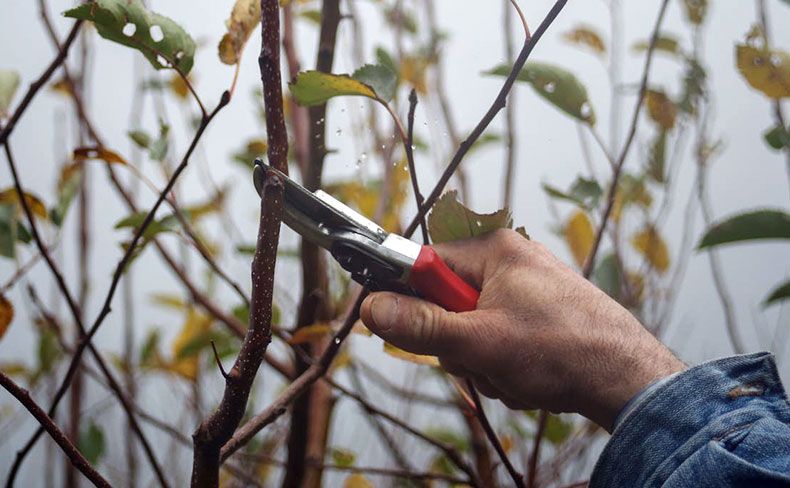
If left unpruned, fruit trees may struggle in growth, and, if you encounter an unfortunate drought, they may not grow at all. More importantly, unpruned trees take longer to bear fruit! Stark Bro's trees are pruned in the nursery row for proper shaping, and our trees are also pruned right before packing and shipping.
Why we take pruning seriously:
• Stimulation
In addition, cutting the tree back stimulates stronger, more vigorous, growth from the remaining buds. After a single growing season, a pruned tree will be bigger than a matching unpruned tree.
• Shaping
The natural shape of a fruit tree is not always the best for maximum fruit production. It's best to start the shaping process as early as possible, particularly to balance the top portion with the root system.
These are just a few reasons all eligible Stark Bro's trees are professionally pruned before they arrive at your door: we want to get you off to the best start possible.
Please note: When your Stark Bro's trees arrive pre-pruned by our professionals, do not prune them again when you plant. Plan to prune your fruit trees during every dormant season. In Zone 6 and further north, you should wait until late winter. A good reference, such as our Pruning Made Easy book, is handy for addressing questions and guiding you through the pruning process.
Tips From the Pros
10 o'clock pruning angle:
Narrow, V-shape crotches are an open invitation to disastrous splitting later on, particularly when your tree is ripening a bumper crop. So, choose wide 10 o'clock and 2 o'clock angles.
Pruning to a bud:
Make sharp, clean cuts close enough so that you won't leave a clumsy stub that's hard to heal over. Stay far enough above the but so it won't die back. Slant the cuts as shown, and the new growth will develop beautifully.
Always prune back to buds aimed in the direction you want limbs to grow:
Every branch had buds pointed in various directions. Since you want vigorous new growth to spread away from the center of the tree, make your cut above a bud that's aimed outward. This helps your tree grow into a spreading shape.
Continue Pruning for Success
“The best time to prune is when the knife is sharp,” old-time gardeners say. Well, that’s not exactly true... fruit trees develop better if they’re pruned at the right times, in the right ways. Here's how:
• Prune trees when they are dormant
Wait until a tree is dormant before pulling out the sheers! This is best for the tree and easiest for you. It's easier to see where to make your cuts when the leaves have fallen. As mentioned above, pruning should be done in late fall, winter, or early spring. Exact timing will vary by zone, as winter months differ by zone.
• Prune fruit trees to certain shapes
Prune into strong, bearing trees following the chart below. If you keep up with your pruning and shaping each year, you’ll make mostly small, easy-to-heal cuts.
• Help the tree form a strong framework
Remove weak, diseased, injured or narrow-angle branches (the weaker of any crossing or interfering branches), and one branch of forked limbs. Also remove upright branches and any that grow toward the center of tree. You want to keep your tree from becoming too thick and crowded and to keep its height reasonable. All these objectives promote improved bearing, which is your overall aim. Try to achieve the general shape of the trees in the drawings provided, but be sure to allow your tree to express its own individuality.
Tips for Pruning
Central Leader
• Apple, Pear, European Blue Plums & Sweet Cherry Trees

These trees do best when pruned and trained to a central leader tree. This type of tree has a pyramidal shape with a single upright leader limb as its highest point. This leader is the newest extension of a long, upright growing trunk from which all lateral branches arise. As with all strong growing branches, the leader should be headed back each year. The uppermost bud on the leader produces a vigorous new leader, and no other shoot should be allowed to grow taller. Lateral limbs should be selected from shoots growing out from the central leader. These should be spaced vertically 4-6” apart, have growth that is more horizontal than vertical and point in different compass directions from the trunk.

Vase-Shape/Open Center
• Peach, Nectarine, Japanese Plums, Sour Cherry & Apricot Trees

These trees do best when pruned and trained to a vase-shape. This type of tree should have no central leader. The shape of the tree is controlled by selecting and maintaining three to five main scaffold limbs arising from the trunk. These limbs should point in different directions and originate no less than 18" and no more than 36” from the ground. Prune as shown, balancing growth evenly between the scaffold limbs.
• Miniature Peach, Nectarine & Apricot Trees
These do not require shaping cuts. However, because they grow so densely, they require regular dormant thinning cuts to remove competing and crossing limbs.
• Whips (Unbranched Trees)
Prune back to 28-36” above the ground at planting time. After the new branches have grown 3-5”, select a shoot to become the leader and scaffold limbs.
• Off-Season Pruning
Sometimes pruning should be done even when the season isn’t the best. Such would be the case if a branch is broken by the wind or by a heavy load of fruit. Emergency treatment is necessary! Prune back the ragged edges, making a smooth cut that leaves no stubby stump. Fast-growing “water sprouts” can be removed as soon as you see them, rather than waiting until winter.

